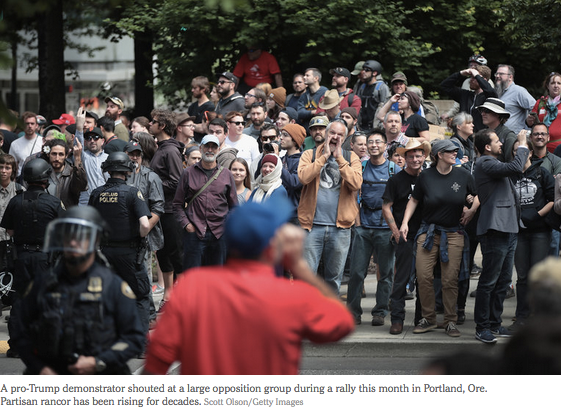Mr. Iyengar doesn’t mean that the typical Democratic or Republican voter has adopted more extreme ideological views (although it is the case that elected officials in Congress have moved further apart). Rather, Democrats and Republicans truly think worse of each other, a trend that isn’t really about policy preferences. Members of the two parties are more likely today to describe each other unfavorably, as selfish, as threats to the nation, even as unsuitable marriage material.
Surveys over time have used a 100-point thermometer scale to rate how voters feel toward each other, from cold to warm. Democrats and Republicans have been giving lower and lower scores — more cold shoulder — to the opposite party. By 2008, the average rating for members of the other party was barely above 30. That’s significantly worse than how Democrats rated even “big business” and how Republicans rated “people on welfare.”
By 2016, that average dropped by about five more percentage points, dragged down in part by a new phenomenon: For the first time, the most common answer given was zero, the worst possible option. In other words, voters on the left and right now feel downright frigid toward each other.




